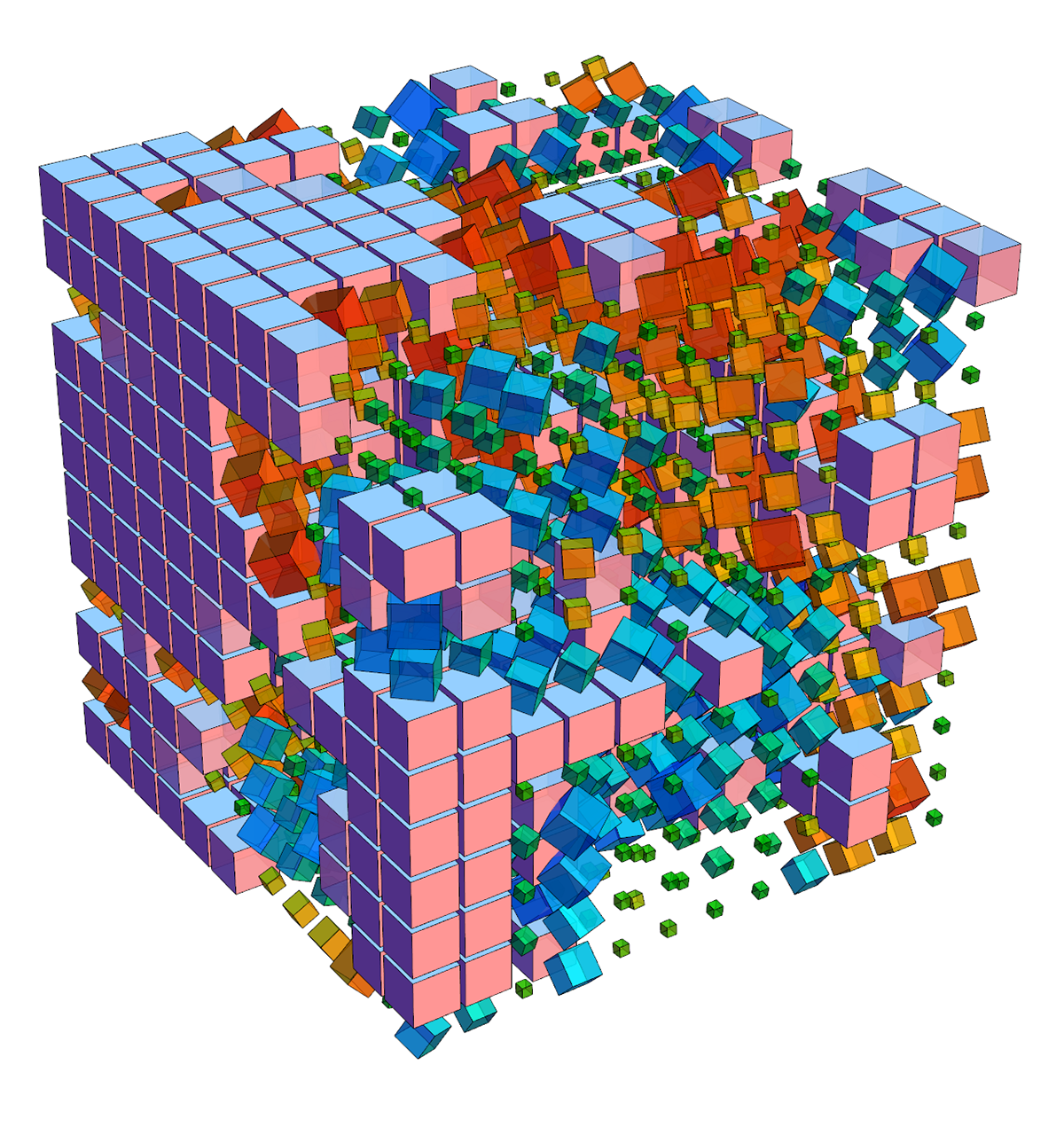










Because computing as an Arts medium is so new and no established rules exists yet the control one imposes on this medium is an extension of the self-control of the artist. The struggle between vision and material is just as real as with traditional media but the artist has to bring more structure with him since the computer offers so very little of its own. It asks of the artist to give it direction and purpose.
If you are working in wood, the material will punish you if you try to treat it as marble. You cannot work with clay like you work with metal. But what is the wrong way of treating a computer as an artist’s material? Is there even one?
One can be surrounded with computers all day in modern society yet approach them afresh each time for artistic needs. The computer becomes a mirror of the limits of the artist himself. It confronts him with his own limits in a clearly undeniable way. Challenging him to broaden his vision and to increase his expertise.
The programs I write to generate these forms make use of a number of different techniques. The Emerald Cities where done to explore the possibilities for new form within a strict set of self-imposed rules. The rules for the block objects were:
The programs I write to generate these forms make use of a number of different techniques. The Emerald Cities where done to explore the possibilities for new form within a strict set of self-imposed rules. The rules for the block objects were:
1. Each element consists of an array of N x N x N cubes.
2. Of these cubes only colour, size and orientation aspects may be changed
3. The positions of the centres of cubes may not be changed and must stay within the grid.
2. Of these cubes only colour, size and orientation aspects may be changed
3. The positions of the centres of cubes may not be changed and must stay within the grid.
A clear 3d extension of the rules used for the Gradient Spaces.
Even staying within these strict rules there are still a surprising number of possibilities. Just randomly changing aspects clearly was not satisfying. To really make the objects work only a small number of the cubes should change. This change must have some order to it and cannot be completely chaotic. To make the change visible it has to be contrasted with no-change. For this we re-used the gradient texture aproach we discussed ealier.
When the basics of this form system were explored I took up themes and tried to translate them into the possibilities of the system. I would take up, for instance, the theme of the four elements and try to translate the essential nature of each element into set of rules for the generation of a shape. Can you spot the four different elements in the top row of images on this page?
One would really have to dive into a theme and think about its density and structure to be able to find a set off aspects that could be expressed within the rule system.
The series was inspired by looking at Emerald crystals embed in granite rock. The crystals are partly transparent and some off the rock can be seen through them. There are interesting parts just visible while others are only guessed at because they remain hidden within the rock.
There is a clear difference between the orientations and colours used by crystals when compared to the way the rock expresses itself. Some rocks are almost totally filled with crystals others only have a small vein of Emerald. All of these aspects I tried to translate into the rule system. Using a series with increasing density and complexity to do justice to the difference in the samples.
In the computer the form becomes a reality. I can fly through it and explore each hidden corner. The object becomes more accessible then the crystals themselves. And I can explore the full extent of each of the form decisions I have made during design. The object becomes a City in which I am a traveller and can visit each building block at leisure. There are some amazing perspectives to be seen which can only be experienced interactively in real-time.
In the computer the form becomes a reality. I can fly through it and explore each hidden corner. The object becomes more accessible then the crystals themselves. And I can explore the full extent of each of the form decisions I have made during design. The object becomes a City in which I am a traveller and can visit each building block at leisure. There are some amazing perspectives to be seen which can only be experienced interactively in real-time.
The main object of these experiments, off course, is to come closer to the essential nature of a thing by wrestling with its aspects and trying to express (or maybe even force) it within a set of self-imposed rules.
This project won me an award, way back in 1993 at the Prix Ars Electronica.
See it here: https://archive.aec.at/prix/showmode/27728/


